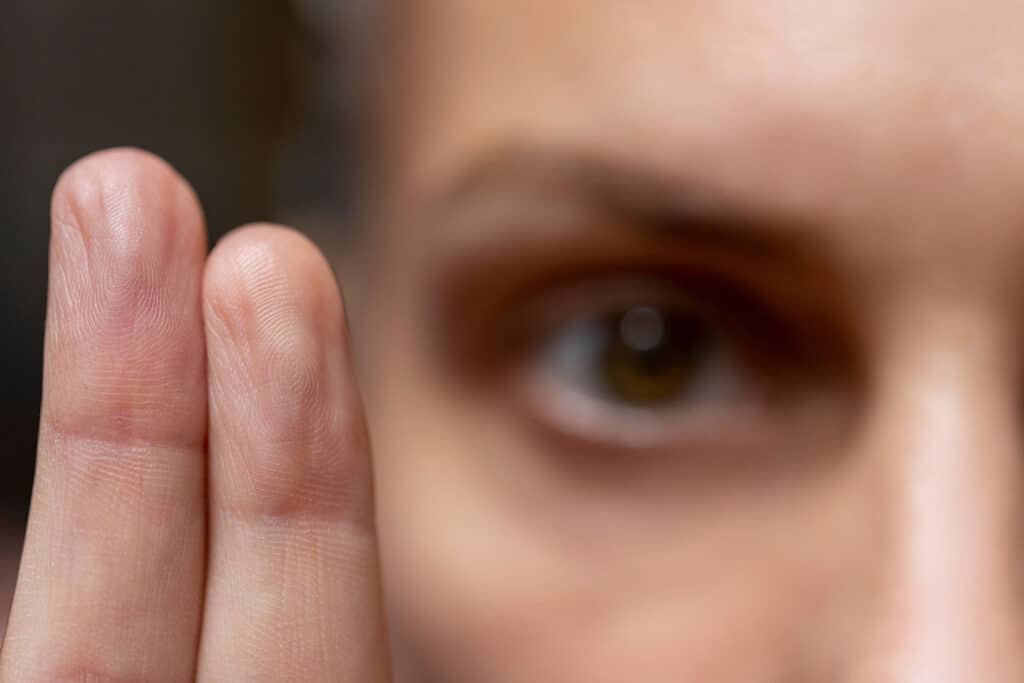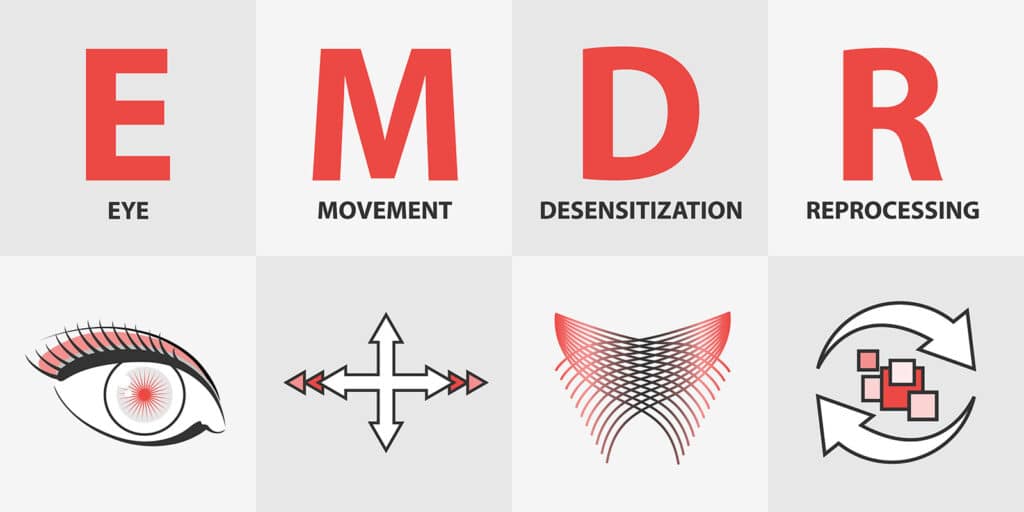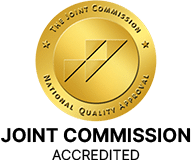No matter how difficult life can get, science and knowledge will always find ways to provide us with solutions. In many cases, all we have to do is seek those solutions.
EMDR therapy is among one of the newest solutions in mental health therapy, focusing on healing from traumatic events that are consistently lingering in our minds.

Some of these traumatic events are painful enough to trigger a severe emotional response, even after years of the distressing event. EMDR focuses on addressing such triggers without having the patient vividly recall those events again.
This guide focuses on EMDR therapy in Florida. We’ll explain EMDR therapy in depth, its technique, benefits, advantages, and considerations.
Table of Contents
What Is EMDR Therapy?
EMDR Therapy, or Eye Movement Desensitization and Reprocessing, is a form of psychotherapy or behavioral therapy that was originally developed to treat post-traumatic stress disorder (PTSD) resulting from traumatic events.
EMDR therapy was first introduced in 1987 by American psychologist Francine Shapiro, making it an extremely recent addition to clinical practice.
According to the EMDR Institute, over 30 controlled studies provided a positive outcome, making it a valuable tool in a treatment plan for traumatic events.
However, it’s now used with other mental health issues as well (as long as some sort of trauma is involved). These include but aren’t limited to:
- Anxiety disorders
- Eating disorders
- Depression
- Obsessive-compulsive disorders (OCD)
- Gender dysphoria
- Personality disorders
- Acute stress disorder
- Phobias
Benefits of EMDR Therapy
Here is why EMDR therapy can be a good idea for you:
It Helps Process Disturbing Memories and Experiences
The eye movements and other side-to-side stimulation in EMDR can help the brain better process and integrate memories of traumatic events.

This makes remembering highly disturbing events and PTSD symptoms less impactful.
It Reduces Emotional Distress
Reprocessing trauma memories allows EMDR to significantly reduce the powerful negative emotions and physical sensations. With these negative stimuli reduced, the patient will gradually process trauma-related memories in a better way.
It Improves Overall Mental Health
Beyond the treatment of PTSD, EMDS can help with other health benefits like anxiety, depression, grief, addictions, and eating disorders.
Relatively Short Treatment Duration
Compared to some other therapies, EMDR can provide relief from symptoms in a relatively short period, often between 3-12 sessions for single-event traumas.
Long-Lasting Effects
The benefits of EMDR tend to be long-term and create lasting changes in how the brain processes traumatic experiences, rather than just temporarily relieving symptoms.
How Does EMDR Therapy Work?
This therapy helps you heal from traumatic memories through the means of bilateral stimulation. The patient would perform a few eye movements while processing disturbing memories and negative thoughts through a set of instructions.
Here are the eight phases involved in EMDR therapy to ensure an effective treatment:
Phase 1: Patient History and Information Gathering
In the first EMDR therapy session, the clinician/therapist conducts a thorough assessment. They would ask questions and/or provide written questionnaires to gather extensive background information.

An extra focus is placed on the traumatic or disturbing events that happened before.
The therapist will also inquire about current issues, psychological symptoms, and difficulties you’re facing related to these adverse life experiences. This history-taking helps determine if EMDR is the appropriate therapy for the condition.
Phase 2: Preparation and Education
The therapist provides psychoeducation about EMDR’s approach, explaining the theory behind using bilateral eye movements and other forms of bilateral stimulation to help reprocess memories.
The therapist will teach you a range of stabilization techniques like deep breathing, mindfulness exercises, and guided imagery to use when feeling overwhelmed during sessions.
Phase 3: Assessment
The therapist will ask you to identify the specific images, thoughts, emotions, physical sensations, and triggers associated with the traumatic memory.
They will guide you to pinpoint the negative self-beliefs stemming from these events, such as I’m unlovable, I’m not good enough, I’m incompetent, etc.
You will then be asked to establish the desired positive beliefs that you want to replace the bad memories with, such as I’m capable, I’m worthy, I’m lovable, and so on.
This phase acts as the “setting targets” phase.

Phase 4: Desensitization and Reprocessing
This is the targeted memory processing phase using bilateral stimulation. The EMDR therapist instructs you to mentally activate the disturbing memory and associated thoughts, feelings, and body sensations.
While focused on that experience, you simultaneously track the therapist’s hand movements with your eyes back and forth in sets.
After each set, you’ll be asked to report any new thoughts, feelings, or sensations that emerged. Expect to have this particular process repeated a few times per session.
Phase 5: Installation
Once you feel a decrease in the distressing memories and flashbacks, the therapist will shift to installing and strengthening the desired positive beliefs.
They will ask you to keep a good memory in mind while focusing on positive connotated statements and doing bilateral eye movements. This allows your brain to make new adaptive connections.
Phase 6: Body Scan
The therapist prompts you to mentally scan your body and look for any residual physical tensions or sensations associated with the negative memory.
If any disturbance remains, you’ll focus on that during subsequent reprocessing. The goal of this is to feel free of bodily stress related to the memory, maximizing the treatment effects.
Phase 7: Closure and Stabilization
The 7th phase of EMDR treatment is closure and stabilization. The therapist guides calming techniques to leave you in a stable emotional state before the session ends.
You discuss strategies for handling potential distressing material that may emerge between now and the next session.
In some cases, the therapist may suggest keeping a journal to document your experiences.
Phase 8: Reevaluation
Each subsequent session begins with reviewing your progress since the last one. The therapist assesses if the previous targets have been successfully processed based on your reports of distress levels.
If so, you may begin reprocessing a new memory. If not, more work is done on the original target before moving on. Your future goals and mental needs are reevaluated.

Why Should Someone Use EMDR Therapy?
With multiple psychiatry approaches available in healthcare departments, one might ask why EMDR therapy may be used. Here’s why:
It’s a Low-Risk Approach
EMDR doesn’t involve any drugs or invasive procedures, making it a relatively low-risk form of treatment.
The therapy relies on natural processes within the brain to reprocess and integrate disturbing memories and experiences.
That’s why EMDR is considered a safe and well-tolerated approach by most patients when conducted by a qualified professional.
It’s a Less Stressful Approach
Unlike talk therapy which can sometimes put the patient in distress, EMDR allows the patient to briefly focus on the memory without having to go into excessive detail.
This adaptive information processing is easier on people and can induce a calm, relaxed state that helps desensitize the patient from their triggers.
The whole idea is to prevent reliving and explaining their traumas repeatedly, which, in itself, can be a trigger to some people.
It Requires Less Work at Home
Compared to therapies that assign extensive homework like journaling or exposure, EMDR generally involves minimal homework between sessions.
Most of the reprocessing work happens primarily during the therapy sessions through guided instructions. Many patients may prefer this because they won’t have to spend large amounts of time thinking about their negative experiences at home.
Considerations Before Taking EMDR Therapy
Here are a few things to keep in mind before trying EMDR therapy:
It Only Works With Trauma-Focused Triggers
EMDR is specifically designed to help process and desensitize disturbing memories and beliefs stemming from traumatic or highly distressing life experiences.
It may not be as effective for people who seek treatment for issues that aren’t directly linked to a specific traumatic event or trigger.
It’s Still Highly Theoretical
While EMDR is an evidence-based practice, the theoretical explanations behind why eye movements and bilateral stimulation help reprocess memories are still largely hypothetical.
The exact brain mechanisms that make EMDR effective are not yet fully understood by researchers and scientists. Some consider the theories behind it to be more anecdotal than proven.
It’s Still Relatively New
EMDR was developed in the late 1980s, making it relatively new compared to many other therapeutic techniques. Being a newer approach means there is less long-term data on its effectiveness over decades or for certain populations.
It can be difficult to assess if EMDR provides a truly permanent, lasting solution since its long-term impacts are still being studied.

How Is EMDR Therapy Related to Addiction?
According to the World Health Organization (WHO), addiction can cause a great deal of suffering. Addiction can either start because of a traumatic event or lead to one.
In other words, EMDR therapy can be an effective tool to help prevent addiction or overcome it; something we understand too well at Recreate Life Counseling.
If you or anyone you love is situated in Florida, you’ll be glad to know that one of the best addiction centers is minutes away. We provide EMDR therapy, along with many other types of therapy to find the best possible approach for each client.
Our therapies include, but aren’t limited to:
Our institute also received the Gold Seal of Approval from The Joint Commission, the highest award any institution can be given.
Meet Our Clinical Team
Our dedicated treatment team is committed to providing exceptional care and support through EMDR (Eye Movement Desensitization and Reprocessing) therapy. Comprised of experienced and compassionate professionals, our team specializes in helping individuals overcome addiction and trauma. We blend expertise with a personalized approach to ensure each client receives the best possible treatment. At Recreate Life Counseling, we are here to guide you on your journey to healing and recovery, fostering a safe and supportive environment every step of the way.

Patrick Casey, ARNP
ARNP
Patrick began his medical career working as a registered nurse in emergency departments and trauma centers in 2008.

Jenna Schafer
Primary Therapist
Jenna earned her Masters degree in Rehabilitation Counseling and Mental Health Counseling from Lynn University in 2020.

Christina Scherer
Family Services Advocate
Christina began her professional career in behavioral health in 2019, dedicating herself to working directly with SUDs.
How Can I Start EMDR Therapy?
If addiction isn’t something you’re currently dealing with, you can still start EMDR therapy to deal with traumatic memories. You can contact us to start therapy; alternatively, you may visit the EMDR International Association (EMDRIA) to find a therapist.
If you’re interested in becoming a therapist yourself, you should have a look at EMDRIA’s training programs here.
Our Facilities
Our state-of-the-art facilities are designed to provide a serene and supportive environment for your recovery journey. Offering comfortable and welcoming spaces that promote healing and well-being. With modern amenities and dedicated areas for EMDR therapy, we ensure a conducive atmosphere for effective treatment and personal growth. Our facilities reflect our commitment to providing high-quality care, combining safety, comfort, and privacy to help you focus on your path to recovery. Explore our tranquil setting and discover how we create an optimal environment for your healing and transformation.

Residential Treatment Center
From the instant you step through our doors, our stunning residential treatment center ensures your comfort and enjoyment throughout your stay!

Boynton Beach Recovery Residence
We empower our clients to navigate the pivotal transitional phase between treatment and real-world reintegration, mitigating the risk of relapse.

Delray Beach Recovery Residence
Our certified recovery residences offer proximity to twelve-step meetings and sober activities. Just minutes away from the beach, an ideal space to heal.

Clinical Treatment Offices
Within our cutting-edge clinical facilities, individuals battling addiction find a tranquil path on their journey of healing and renewal.
Final Words
Regardless of how deep a traumatic memory is embedded in your mind, there’s always a type of therapy that can help you overcome it. EMDR therapy might be just that.
If you are anyone you love is struggling to overcome a painful event, we’ll be more than happy to hear from you at Recreate Life Counseling.
Please contact Recreate Life Counseling for additional information about EMDR Therapy near you.
FAQ
What is the EMDR success rate?
Why is EMDR so controversial?
Who is EMDR not suitable for?
What is the difference between EMDR and ART?



